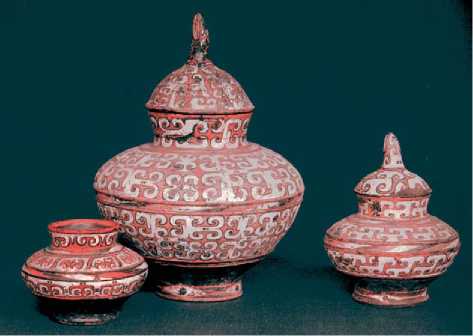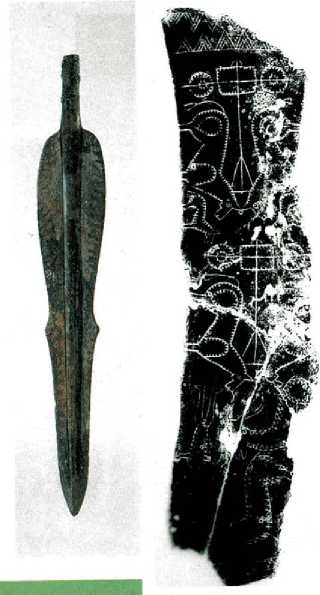By 1600 BCE UXJD appears, with apparent connections with the archaeology of the Eurasian steppes, especially in the styles of small bronze artifacts. The locally cast bronzes include knives with upward points and handles cast with rings or animals, and small horse trappings. The large stone constructions of LXJD were no longer built. UXJD depended on herding sheep and goats in addition to agriculture. Ridden horses may have been an aid to herding. Slab graves near the surface are characteristic of UXJD. The burial style suggests steppe affiliations, as well as shapes and motifs on the bronzes.
In Jilin Province, Bronze Age archaeological remains are labeled the Xituanshan culture (1200-400). Although there are no central places, large villages with cemeteries imply more than a simple agrarian society. Each person is buried in a stone slab burial with a few pots, stone tools, and heads or other bones of pigs and dogs. Elite burials are not in cemeteries, but found singly. Typically they contain a bronze dagger with a blade in the shape of a pair of curly brackets ({}), having a T-shaped handle constructed of different materials. Mirrors of geometric design are frequently found in elite burials, along with

Figure 3 Painted pottery from Lower Xiajiadian.

Figure 4 Liaoning dagger and bone with chariot drawing.
Necklaces of green tubular beads. An etched bone clearly depicts a chariot with driver being pulled by two horses (Figure 4).




 World History
World History









